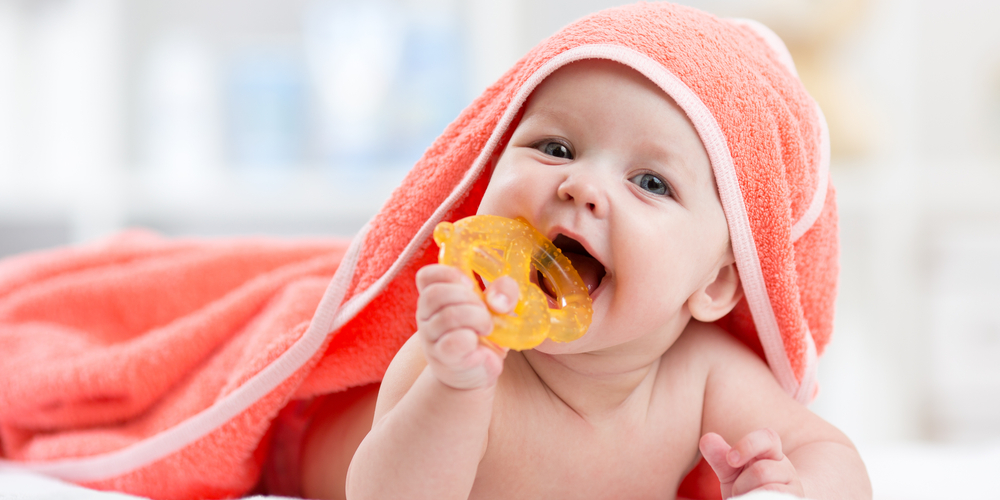
Teething is the process of the milk teeth erupting. It usually begins at around the age of 5 months but some children develop teeth a lot earlier or later than others. Teething can be quite a traumatic experience for some children, while others will not be bothered by teething.
Development of teeth
Babies’teeth actually start to develop while the baby is still in the womb. However, they do not start to erupt until around the age of 6 months. Generally, the incisors appear first, followed by the canines and then the molars. There are 20 milk teeth in total and most children have all their milk teeth by the age of 2.
Symptoms of teething
Some children will display symptoms of teething, while others will develop teeth without any problems. Common symptoms include:
- Rosy cheeks or a rash on the face
- Slightly higher temperature than usual
- Dribbling and drooling
- Red, swollen gums
- Disturbed sleep patterns
- Restlessness
- Loss of appetite
- Chewing: many babies tend to try and chew on things, including toys, when they are teething
Ways to ease pain during teething
If your baby is struggling with teething, there are various ways you can help to ease their pain; these include:
- Teething gel: this is a cooling gel, which is applied to the gums. Many gels also contain a mild form of local anaesthetic, which helps to numb the pain. It is important to make sure you choose a children’s teething gel and not an adult product, as these are not suitable for children.
- Pain relief: if your baby is in pain because of teething, give them children’s pain relief medication. Make sure you read the label carefully and consult your pharmacist or doctor if you have concerns.
- Teething rings: teething rings encourage babies to chew, which can help to relieve pain.
- Cool drinks: cool drinks (make sure they are sugar-free) help to soothe the gums and ease pain.
- Comfort: many babies feel emotional when they are teething so they may welcome lots of cuddles.
